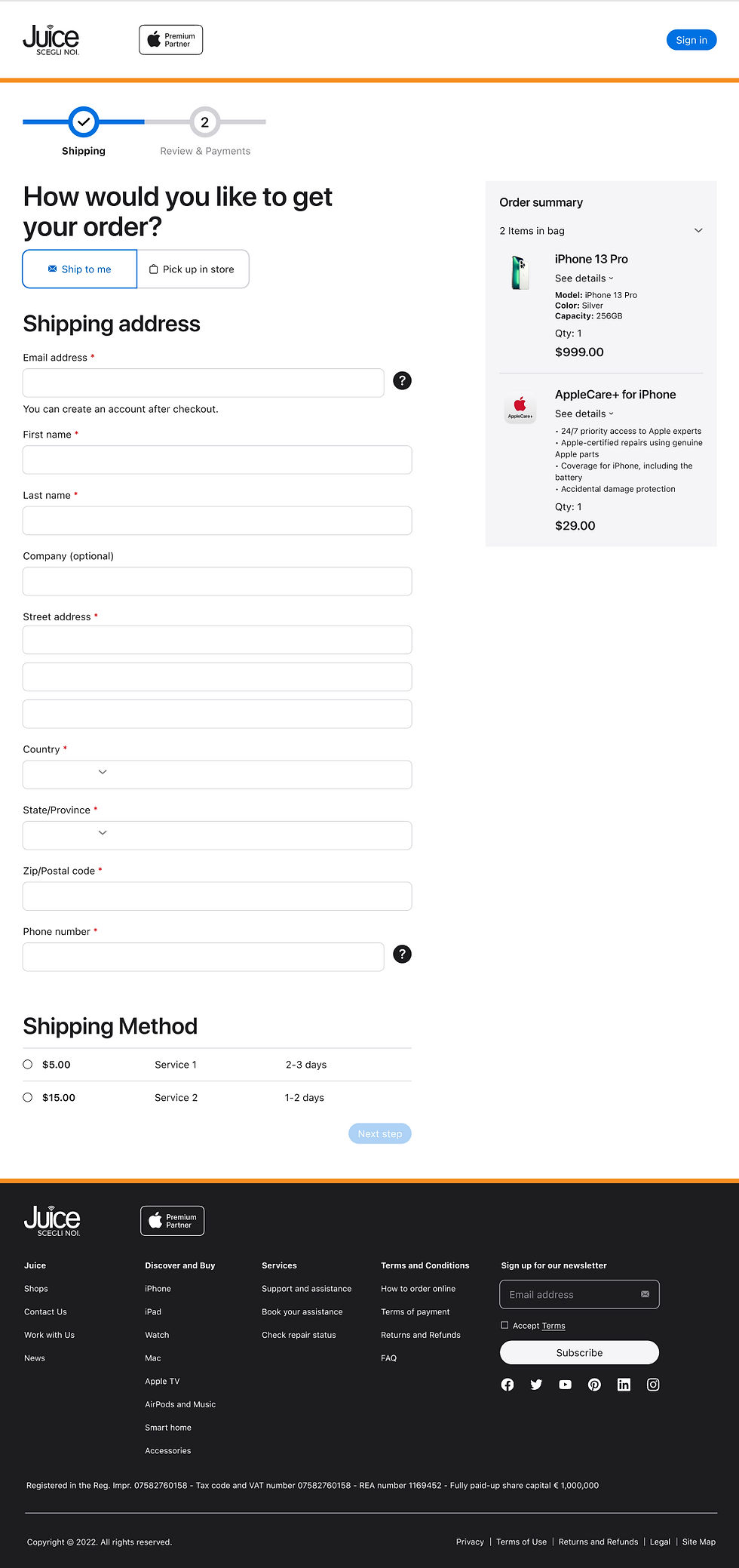CASE STUDY :
Apple Premium Partners Program

Unifying Global Partners
Apple’s E-commerce Transformation
Apple orchestrates a sweeping overhaul of its Global Premium Partners’ digital presence.
My ROLE
-
Design System Manager and Team UX Lead
My Role
Spearheading Apple’s
Design System Revolution
As a key player in Apple’s global e-commerce transformation, I took on multiple critical responsibilities:
Interactive Prototype Creation
• Developed high-fidelity, interactive prototypes in Figma
• Showcased full user journeys, micro-interactions, and component states
• Enabled stakeholders to visualize and test the user experience
Figma Design System Development
• Architected a comprehensive atomic design system from the ground up
• Created design token system for colors, fonts, icons, etc.
• Incorporated Apple’s HIG principles and 8-point grid system
• Created custom SVG icons and component variants
Developer Handoff for Magento Team
• Bridged the gap between design and development
• Provided detailed specifications of atomic components
• Ensured alignment with Master CSS for seamless implementation
Team Management
• Led the Magento team through the design system implementation
• Facilitated collaboration between designers, developers, and stakeholders
• Drove consensus on design decisions across global markets
This multifaceted role allowed me to leverage my expertise in design systems, honed from previous projects like Hyundai, to deliver a transformative solution for Apple’s global partner network.
This strategic initiative showcases Apple’s commitment to delivering a cohesive, premium user experience across its entire partner network, balancing global consistency with local partner identity.
Strategic Objectives
-
Migrate all Global Partners to unified e-commerce ecosystem
-
Standardize the core buying experience across partner platforms
-
Maintain brand consistency while allowing partner customization

Innovative Solution
-
Leveraged Shopify and Magento as primary e-commerce platforms
-
Engineered an Atomic Design System in Figma to:
-
Drive stakeholder consensus
-
Guide developers in creating new Magento templates
-
-
Crafted templates for crucial components
Key Focus Areas
-
Homepage design: Creating a compelling entry point for customers
-
Core Buy Flow: Optimizing the critical path to purchase
Problem Space
The Challenge: Unifying Apple’s Global Online Presence
Apple faced a critical problem in its global e-commerce ecosystem. Premium partners worldwide were creating disparate online shopping experiences, diluting the consistent user experience (UX) that is integral to Apple’s brand identity.

This fragmentation extended to crucial touchpoints such as shopping carts, shipping processes, and payment systems. Despite the existence of Apple’s Human Interface Guidelines (HIG), partners were developing varied interfaces, leading to inconsistent brand representation across different markets.
To address this issue, Apple made a strategic decision to migrate all partners to either Shopify or Magento platforms. This move aimed to create a templated experience that would unify the global online presence, using the HIG as a foundational guide.
The challenge lay in developing a system that could:
-
Ensure brand consistency across all partner sites
-
Maintain Apple’s renowned attention to detail, including the famous “8 pixel grid”
-
Facilitate rapid changes while accommodating stakeholder input on minute details
-
Create a scalable and manageable design system for global implementation
To tackle this complex problem space, Apple needed a solution that could bridge the gap between design, stakeholder consensus, and technical implementation across its vast network of global premium partners.
Solution
Solution: Crafting Apple’s Bespoke Atomic Design System
Apple’s innovative approach to unifying its global partner experience centered on a meticulously crafted atomic design system, leveraging Figma’s powerful capabilities.

Foundation: Apple HIG and 8-Point Grid
-
Utilized Apple’s Human Interface Guidelines (HIG) as the cornerstone for design decisions
-
Implemented the iconic 8-point grid system for precise, consistent spacing
Atomic Design System Development
-
Created a comprehensive system from scratch, including:
-
Custom SVG icons for a fresh, unified look
-
Atomic components with multiple variants
-
Detailed micro-interactions and component states
Figma as the Central Hub
-
Developed interactive prototypes showcasing full user journeys
-
Built a component library that served dual purposes:
-
Communication tool for global stakeholders
-
Reference for developers creating custom templates
-
-
Seamless Developer Integration
-
Aligned the design system directly with the Master CSS
-
Provided developers with granular details of each atomic component
Stakeholder Alignment
-
Utilized Figma’s collaborative features to drive consensus among global partners
-
Demonstrated behaviors and interactions through interactive prototypes
This bespoke atomic design system not only solved the immediate challenge of unifying the global partner experience but also established a robust framework for future scalability and consistency across Apple’s vast ecosystem.
Design System

ATOMS
Design systems start with the smallest parts, the atoms. For this project, we started at zero and made each icon by hand in Illustrator and imported as SVGs.

Molecules
Molecules are atoms grouped in meaningful ways. We made every state of every single item.


Components
Components are a powerful part of a design system. Variations can show state, preference and nuanced changes.



Prototype pages
Every state of every component during the core buy flow of purchasing an iPhone was represented in clickable prototypes- one for desktop and one for mobile.

Desktop Core Buy Flow

Mobile Core Buy Flow

The Proof is in the pudding
Juice.IT - current site March 2025

